navigation

In the rush to deploy digital sales channels, it is easy to get carried away with trying to create a completely self-serve model. B2B eCommerce experts often point out how B2C has changed the expectations of business buyers. That is true, but it is also true that business buyers still want some interaction with a vendor sales rep.
When used properly, eCommerce doesn’t replace sales reps, it is a B2B sales enablement tool that empowers your sales teams to do their job better.
What Is Sales Enablement in B2B Commerce?
Sales enablement is the iterative process of providing your sales team with the resources they need to close more deals. These resources may include content, tools, knowledge, and information to effectively sell your product or service to customers.
Like most B2B enterprises, your products are complex. They solve problems and provide the solutions your customers need to be successful in their business. But customers don’t intuitively know this, and they may not be able to fully capture your company’s ability to drive their success from a website alone.
In the offline world, B2B sales enablement provides the sales team the tools and information they need to keep the prospect or client engaged throughout the sales cycle. Marketing may develop brochures or sales may collect use cases for a presentation. In the past, sales enablement tools were re-usable, and the sales reps used them in conjunction with face-to-face meetings and phone conversations.
Sales enablement didn’t go the way of the dinosaurs with the rise of the self-serve model and B2B eCommerce. Like everything that succeeds, it evolved.
Today, sales enablement is still an important part of successful online selling. It just takes a different form. B2B commerce sales enablement is now a strategy to move customers through the sales funnel by supporting the customer through every step of their journey. In the past the focus might have been on the materials, data, and tools. Today, the focus is on customer needs.
Why Is B2B Sales Enablement Important?
Selling B2B products generally involves selling complex products in a complex buying scenario. While B2B buyers expect a B2C online buying experience, it’s not that simple. B2C buyers purchase on impulse, usually don’t need to involve others in the decision, and they aren’t terribly concerned about establishing an ongoing relationship with the seller.
B2B buyers are sourcing a supply of a product or service they will need on a recurring basis. For example, they buy fasteners to use in their manufacturing process, parts for the forklift in their warehouse, or bedding for their hotel chain. According to Gartner, in a typical firm an average of seven people are involved in a purchase decision. And when they do make a decision, they are evaluating more than just the product. They factor in brand reputation and how they feel about the purchase experience. After all, they are establishing a relationship – not making a one-off purchase.
B2B eCommerce hasn’t changed this. It’s just changing how it’s done.
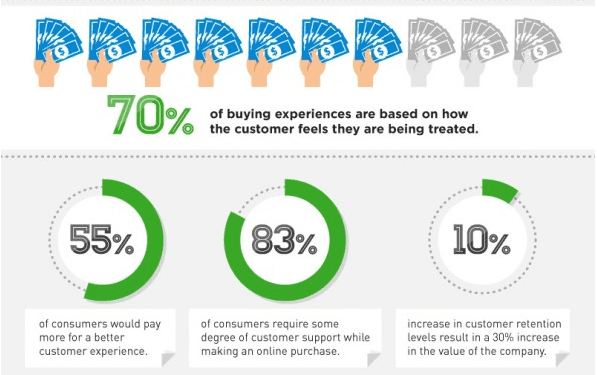
[Source]
The majority of buyers, over 83% of them in fact, need support during the process. That’s because according to CSO Insights, 44% of potential buyers have identified a specific solution before they reach out to the seller. Buyers are doing their research, and they know they need something to solve their problem, they just aren’t sure what it is.
That’s why a B2B sales strategy needs to meet the buyer where they are and how they want to proceed. In the past, information might have been shared in a face-to-face meeting, but with B2B eCommerce, you may provide information via email, and then that email is shared within the buying group. According to the Earnest Agency, 72% of B2B buyers share emails with the information they find useful.
If you sell a product with a low level of complexity to buyers with a simple buying process, then straight eCommerce works.
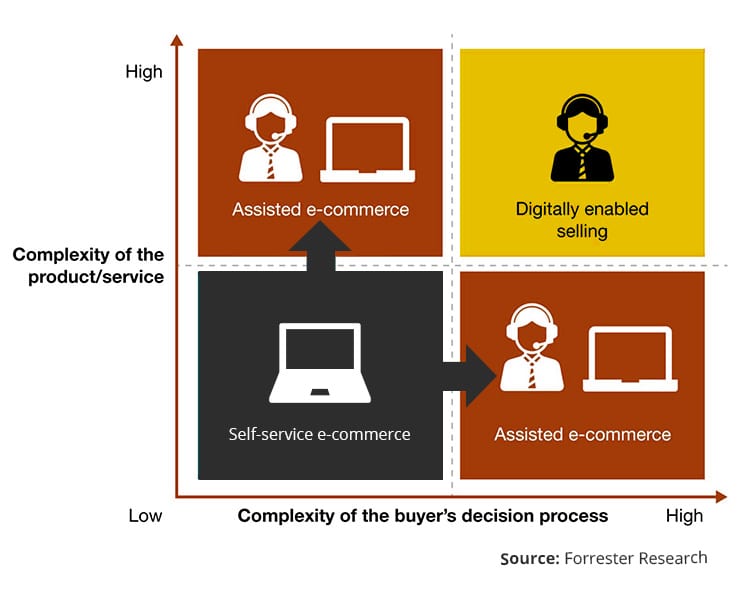
[Source]
But as the degree of complexity of your product or service increases and the buyer’s decision-making framework becomes more complex, you need a solid B2B eCommerce sales enablement strategy in place.
Now Is the Time to Rethink Your Sales Strategy Model
One thing is true for both B2B and B2C eCommerce, the customer experience must come first. Your sales enablement strategy must pivot from the productivity of the sales reps (even though that is still a key metric) to improving the customer experience.
And both the on and offline experiences must be enhanced. When customers have a positive experience, it increases loyalty and retention so the lifetime value of the customer increases. A positive customer experience also enhances the chances that your customers will say positive things about the experience on social media or within their sphere of influence.
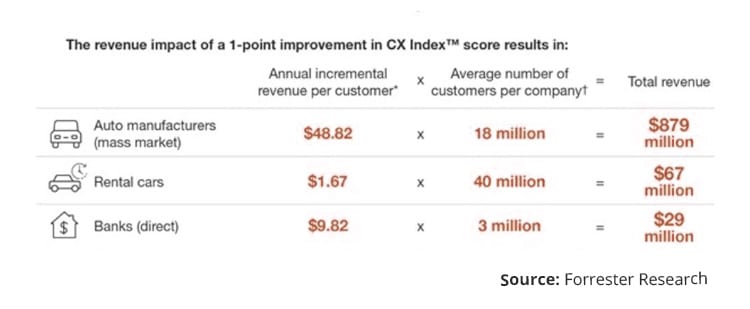
[Source]
A positive customer experience leads to positive results in revenue. And as this infographic shows, it’s time for large companies to start thinking small. As in thinking like a small company.
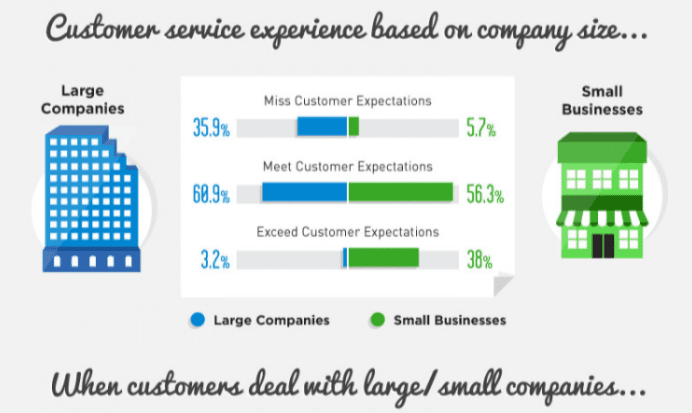
[Source]
While large companies may do better than small companies at meeting customer expectations, they miss the mark more often and rarely go above and beyond. And small companies do better at anticipating customer needs. Why? Because they tend to deliver a more personal experience and a high-quality purchase experience.
So, your sales enablement strategy must create an experience that is highly personalized and tailored to the needs of the customer at every step of their journey. Remember, 55% of customers will pay more for a positive experience.
Sales reps, automation, and an information-rich B2B eCommerce site must all come together to deliver the experience customers want.
How to Build a Successful B2B Sales Enablement Strategy in 2021
The modern seller uses a modern enablement strategy. They start by assessing the current situation to identify where improvements must be made and then developing a plan to execute these improvements. This may include new tools in your technology stack and new processes. In any case, you’ll want to manage the change carefully alongside its implementation. Here is a look at the steps involved in creating a B2B sales enablement strategy.
Step 1: Strategy
Start the process by identifying weak spots, blind spots, and other areas for improvement. Some spots may be easy to identify. For example, Animal Supply Company is one of the nation’s leaders in distribution to the pet supply industry. Their growth through acquisition strategy created a Byzantine network of disconnected systems and data stored in silos.
They knew their digital transformation must create a unified backend if they were ever going to support a better customer experience on the front end. And because sales enablement in 2021 is customer-focused, they set a goal of improving as a move of a minimum of 10% of sales to their digital channel. Not only did they create a backend that enables sales reps to provide better support and improve order processing, but they also extended the website to allow conveniences such as placing an order directly from a store shelf by scanning the barcode.
Other areas may be true blind spots and you don’t know they exist. A well-formed customer survey can uncover these blind spots and point out areas for improvement. Keep the survey brief and focused on a clearly defined objective: for example, gauging customer satisfaction with the buying process. Don’t shy away from tough questions and include a mix of multiple-choice and open-ended questions.
Go beyond simple Net Promoter Score questions and find out if customers think your website has the information they need to form a decision and if your content answers the questions they may have. Quantifiable survey results provide better quality data than anecdotal evidence from the sales rep.
Step 2: Process
Once you’ve identified the areas for improvement, take a look at your existing processes. There may be processes that can be streamlined or automated. For example, would potential buyers prefer to use an online Request for Quotation (RFQ) or Request for Proposal (RFP) process?
When a potential customer submits an RFQ or RFP they are sending a strong signal they are seriously interested in making a purchase. Depending on your product or service, this might be the time for human intervention. On the other hand, if you sell commodities your customers might appreciate an automated eCommerce process whereby their RFQ or RFP receives an immediate response, priced appropriately by a pricing engine using your predefined pricing structure.
Animal Supply takes the process one step further. When they attend an industry conference, they use technology and a touchscreen to pull up product information and pricing for existing customers. This allows them to take orders digitally, while they are face-to-face with the customer. In addition, they can enter information from prospective customers and give them product information and pricing as well. Such positive interactions result in an immediate conversion from a warm lead to a closed sale.
Whatever approach you take, remember you are improving processes to improve the customer experience at every stage of the funnel.
These new processes represent a change for your company as well as your customers. Like all significant changes, this one must be managed carefully. So, study the different approaches to change management and select the approach that works best for your organization.
Step 3: Involve Your People
Sales enablement for B2B may represent a major cultural shift for your company. Becoming a modern seller shifts the focus from closing more deals to solving more customer problems and keeping clients happy. Make sure your team has the tools necessary. As the people closest to the customer, they are in the best position to generate ideas for content, eBooks, and videos.
Your customer service team may have ideas on improving the return process, creating troubleshooting guides, or FAQ pages. Get their input on chatbots.
Communicate continuously, reinforcing the customer-focused message. Effective change management requires open two-way communication and making sure all parties affected by the change are a part of the process.
Step 4: Technology
Once steps 1 and 2 are defined and communicated, the teams are identified and onboarded, then it’s time to choose and implement your new technologies.
Use a minimum viable product (MVP) approach to incrementally test and validate your new technology adoption. With an eCommerce MVP, you can minimize cost and risk while still authenticating the new sales enablement tools. You can even A/B test to help you reach the optimal solution.
For example, after users download lead-generating content, you may test an automatic in-document pop-up call to action screens against automatically generated follow-up emails.
Sales Enablement Tools for B2B Commerce
B2B sales enablement tools should improve the customer experience across all customer touchpoints. From kiosks to social media and call centers to brick-and-mortar locations, buyers crave a connected experience.
Digital suites of products offer a comprehensive approach to B2B commerce sales enablement. They include:
- Experience management tools for digital asset management, landing pages, navigation, merchandising, and content management.
- Product information management tools for attribute management, relationship management, product taxonomy, and data quality.
- Commerce management tools for cart creation and checkout, pricing rules, promotions and coupons, guided selling, and site search.
- An order management system for payment processing, returns processing, shipping rules, customer service, and enterprise inventory.
In addition, these digital suites easily integrate with ERP and supply chain solutions, warehouse management tools, point of sale devices, and business intelligence technology.
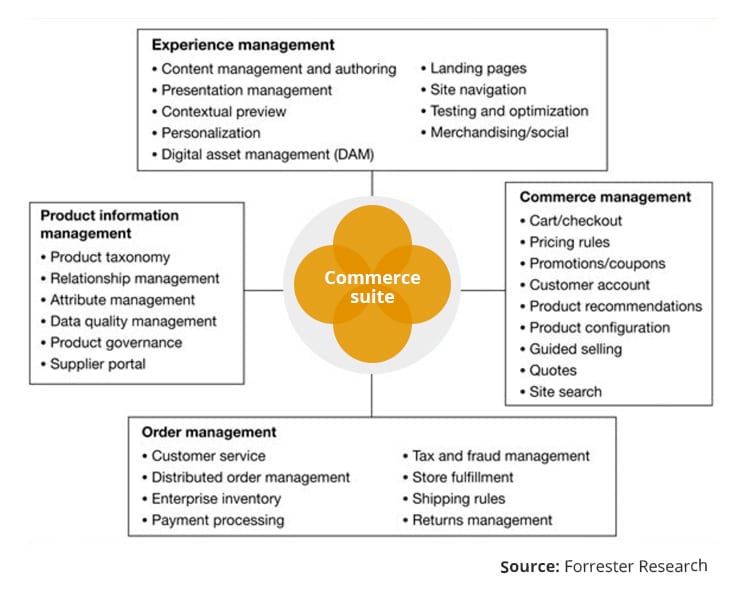
[Source]
With the commerce suite at the center and synergistic integrations of your CRM, PIM eCommerce, and ERP you create connected experiences for buyers and sellers. Everyone from midsize business owners to B2B enterprises are using this approach with great success. Let’s take a look at some case studies to better understand the impact of sales enablement on B2B marketing, sales, conversion rate, and customer satisfaction.
SupplyCore B2B Commerce Sales Enablement Case Study
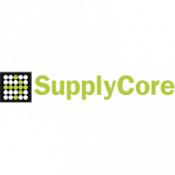
One of the greatest challenges to customer experience was keeping customers informed about their order status.
Sales reps spent hours on the phone tracking down orders, determining status, and then relaying this information to customers. Due to the nature of the business, order capture, sourcing, and fulfillment can take several months and involve multiple parties, application systems, oversight entities, and must comply with numerous governmental regulations and verifications.
They solved the problem by implementing an integrated digital commerce platform that allowed customers to create and manage their own accounts, place and track RFQs, negotiate contracts in real-time, and track status from the time the quote is created to the time the materials are received. The sales and customer teams can now focus on nonroutine activities while customers get the self-serve experience they want.
And because they used an integrated suite that supports multiple front-end experiences, they were able to set up a new line of business in less than 90 days, create a COVID-19 specific site for PPE, and enable a CRM that enhanced the capabilities of the sales team.
Animal Supply B2B Commerce Sales Enablement Case Study

As previously mentioned, Animal Supply Company was hampered by disconnected legacy systems. Placing an online order was difficult and could require accessing more than one system. It was time-consuming and frustrating for both customers and sales reps and provided little actionable business intelligence.
By unifying the multiple ERPs with middleware and bringing them into a single commerce hub, they centralized their data. Because they used a headless architecture and decoupled the frontend from the backend, they could support multiple sales channels that personalized the customer experience.
In addition, they were able to serve as a 3PL partner for their retail store customers. Retail stores could enable their own webstore, take orders from their own customers, and have them automatically processed and shipped by Animal Supply. By enabling their retail store customers to build their business, both businesses grew by improving the customer experience.
How to Measure Sales Enablement Success in B2B Commerce?
Like with all systems, measurement is crucial to determining performance against a standard. The key performance indicators (KPIs) you use will depend on the goals you initially set during the strategy phase. Of course, sales volume is always a good indicator if you are on the right track, but here are a few other KPIs to consider:
- Leads-to-opportunities conversion measures how many leads convert to opportunities. It not only measures the conversion rate but indicates the quality of the leads. Leads with a low-quality score won’t become qualified and thus won’t convert. This KPI should trend up.
- Customer satisfaction increase can be measured with changes to the NPS or other customer satisfaction scores you are using. If you measured customer satisfaction during the strategy stage, measure again once changes are implemented to see if this KPI is on the rise.
- Sales cycle length should be one KPI that goes down. By better serving customer needs, the sales cycle should be shorter. In addition, digitizing your RFQ frameworks should shave time off the cycle as well.
- Opportunities to closed deals conversion rates should increase. Because you are better at serving the customer an improved experience, you should see deals closing at higher rates.
Sales productivity per sales representative should also trend up. Because a sales enablement strategy provides team members more relevant tools and information, they spend more time closing and less time taking care of routine tasks.
Enable Your B2B Commerce Sales
The basic B2B buying journey hasn’t changed. Buyers still have a need, research products to fill the need, negotiate terms, and make a purchase. The difference is how they do it. Make sure your sales are enabled for a digital experience when that’s what the buyer wants and personal interaction when they are ready for it.
Provide relevant information along the way and a smooth, connected experience at every touchpoint.
Use integrated suites of products that allow you to customize the workflows and keep a 360-degree of every lead, every customer, and every transaction. A digital commerce site that serves as a cohesive hub for PIM, ERP, WMS, CRM, and other software supports a more connected experience for buyers and sellers.
Find out how Oro products provide modern sellers the tools for sales enablement for B2B eCommerce.
Questions and Answers
What is sales enablement?
Sales enablement is essentially offerting sales teams the tools and resources to close more deals. These can include timely content, metrics, or automation tools that equip them with information to make better decisions.
Why is sales enablement important?
The way buyers evaluate options and how they come to a purchase decision is changing rapidly. Buyers are more independent and demanding than ever, so traditional sales and marketing strategies no longer work. Sales enablement is a strategy that gives reps the alignment, knowledge, and tools to attract and keep customers.
What is sales enablement in B2B eCommerce?
Sales enablement in B2B eCommerce isn’t just about offering sales reps with productivity tools, nor is it entirely about giving customers a self-service portal. It’s about aligning marketing teams and sales departments around a common goal, empowering sales teams to work more effectively, and improving the customer experience.
How do you create a B2B eCommerce sales enablement strategy?
There are four main steps to crafting a B2B eCommerce sales enablement strategy. 1. Set your goals and select a strategy, 2. Take a look at existing processes, and identify which ones need human intervention or can be automated with the help of digital tools, 3. Communicate with your team, learn with them, and gather their ideas, 4. Select the right sales enablement technology that meets your needs.




